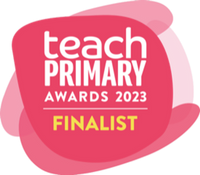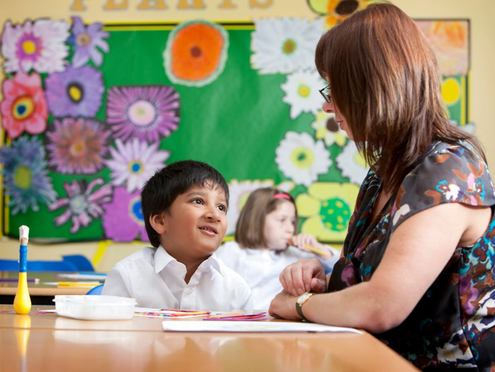In order to demonstrate their potential in their national assessments, learners need the literacy skills to understand and respond to the questions clearly, not just in literacy exams but in all of their assessments. In this article, we explore how literacy skills learned at primary level help with SATs and secondary education.
What are SATs?
SATs stands for Standard Assessment Tests, also referred to as national curriculum assessments, and they take place in May each year to measure children’s academic attainment in primary school in England. Children sit Key Stage 1 SATs in Year 2, and Key Stage 2 SATs at the end of Year 6; the latter set of exams is especially important, as these results are the metric used to establish whether or not learners are meeting the expected standard of education when they enter secondary schooling..
KS1 SATs are informal and untimed, testing learners’ ability in maths and reading. From the 2023/24 academic year, these assessments will be non-statutory, which means schools can decide whether or not to have the KS1 assessment tests. Progress can still be tracked across primary education using the statutory baseline assessment (RBA) that takes place in reception class as the starting point.
KS2 SATs are more formal and cover:
- Reading, which is a single paper with three different types of texts and a range of different questions, some comprehension-based and others relating to style and technique.
- Spelling, Punctuation and Grammar, which includes a short-answer grammar, punctuation and vocabulary paper, plus an aural spelling test with written sentences containing blanks that learners fill in after they hear the full sentence.
- Maths, consisting of an arithmetic paper with number-focused questions, and two reasoning papers containing a range of problem-solving challenges.
Unlike KS1, which is corrected by teachers, KS2 SATs are sent away to be marked externally. Scores are given on a scale of 80 to 120, with 100 or more showing that a learner is working at or above the age-related expectations set out in the National Curriculum.
Why are SATs at the end of primary school?
SATs are designed to give parents an idea of their child’s attainment level, to contribute to the transition to secondary school, and to highlight the need for additional support if necessary. Many secondary schools use the results to decide in what sets or streams learners should be placed and to generate targets for GCSEs, although some also carry out their own additional testing in the form of Cognitive Abilities Tests (CATs). Learners who have scored below 100 in the SATs will need additional support, such as literacy interventions, in secondary school.
SATs are also a measure of primary schools’ performance. KS2 SATs results are published annually by the Department of Education in the Primary School League Tables, which allow for comparison of schools’ consolidated results against other schools and the national average, both for year 6 attainment and for progress between KS1 and KS2.
How do literacy skills help children achieve their SATs potential?
While SATs are a measure of a school’s performance, the KS2 SATs can have a significant impact on learners’ secondary education. English and Maths SATs scores are often used to set targets across all of a learners’ GCSE subjects and they feed into the Progress 8 system, which is the secondary school version of SATs.
It’s important that children are able to demonstrate their potential through the SATs so they are set appropriate targets for all their topics at secondary level. Literacy skills learned at primary school are intrinsic to achieving this. This is because SATs measure all areas of literacy, but also because literacy skills help learners approach the assessments well and contribute to success across all subjects. In fact, a learner’s results for literacy in their SATs can sometimes have a larger impact on STEM subjects than English Literature going into secondary education.
Below, we look at the link between primary school literacy skills and SATs outcomes.
Reading
Research shows a strong connection between reading ability and success across the curriculum, with the link between strong reading comprehension skills and good attainment higher for Maths than some arts subjects, such as English Literature. When it comes to SATs and other exams, reading is a necessary skill for understanding a question and being able to edit and amend an answer before submitting it, and this is true for every subject.
Grammar
Understanding grammar rules and being able to apply them are essential skills for sharing information clearly and concisely. The ability to create an accurate sentence that conveys the intended meaning to another person relies on an understanding of sentence structure, word order and grammar elements, as well as having had practice in applying them to a range of writing tasks. If children are unable to express the answer to a question clearly, they won’t be able to demonstrate their attainment level.
Spelling
Decoding words for reading and encoding them for spelling both involve an awareness of the phonemes and speech sounds that make up words. This essential knowledge is taught throughout primary school and underpins the ability to spell and share information and reasoning with assessors correctly, which is crucial, both in primary and secondary education.
Punctuation
Types of punctuation, learned throughout primary school, also play a big role in SATs. A strong understanding of punctuation gives learners the tools to write an accurate response to questions in any subject.
Vocabulary
The size of a child’s vocabulary in early years of school is a predictor of academic success. By year 6, learners should have the vocabulary knowledge necessary to understand and respond to assessment questions, such as the logical, worded problems in the maths reasoning papers, or the range of questions and texts used in the English reading paper.
It also means encouraging learners to use subject-specific contexts for new language: for example, knowing the names for different grammar elements in order to do well in the short answer grammar and punctuation paper, or understanding mathematical language and using it in context to develop an argument, justification or proof. Mathematical language requires a good grasp of English vocabulary, as well as a strong disciplinary literacy strategy; for example, to understand the synonyms used for calculations (‘subtract’ can also be expressed as ‘take away’ or ‘less’), superlatives (‘biggest’, ‘smallest’) and words relating to comparison (‘more than’, ‘less than’, ‘in order’). If learners understand these words, they are able to direct more of their cognitive processes towards solving a challenge, rather than trying to understand it.

A comprehension literacy solution
Vocabulary and grammar instruction for learners aged 6-16
How can literacy prepare students for secondary school?
Not only do the literacy skills taught in primary school help with SATs results, but they also pave the way for learning in secondary school and beyond.
According to the Education Endowment Foundation (EEF), the educational prospects for disadvantaged students that make the transition from primary to secondary school below the expected standard for reading is “grave.” Based on past cohorts, only 1 in 10 of these students achieve passes in English and Maths at GCSE and less than 2% achieve the English Baccalaureate.
Good literacy is linked to academic success across the curriculum. Research has found that students who do not develop sufficient reading skills by the middle of primary school are less able to learn other subjects. An EEF review shows the strongest factor affecting students’ attainment in science is how well they understand written texts.
These findings, and others, have led to the emergence of ‘disciplinary literacy’ in secondary schools. This theory recognises that there are subject-specific literacy skills necessary for success, and that students need to be taught to read, write and communicate like experts within all subjects, not just in English classes, in order to close disadvantage gaps and succeed across the curriculum.
To make the most of this focus on disciplinary literacy in secondary school, students should leave primary school with sufficient general literacy skills so they can activate prior knowledge and use the grammar and vocabulary they have already learned to access more complex and specific language. Literacy is a large part of the primary school curriculum and many primary school leaders have implemented whole-school literacy strategies.
However, with 2014 statistics showing that 1 in 5 children in England cannot read well by the age of 11, many learners are likely to be entering secondary school without the language skills they need to thrive. Once they’re in secondary education, it’s more difficult for them to catch up, with further research in 2015 finding that 18% of 15-year-olds in England and Scotland do not have minimum literacy proficiency.
If the language foundations are laid well in primary school, students are better able to problem solve, work independently and learn the necessary vocabulary and concepts across the secondary level curriculum.
How Bedrock provides a comprehensive curricula for literacy skills in primary school
Research by the Education Endowment Foundation suggests that improving literacy in primary school is crucial if learners are to succeed in secondary education. By the time a learner is 4, a language gap between learners from advantaged and disadvantaged backgrounds is already being established - primary educators play a key role in closing this gap, helping learners from disadvantaged backgrounds hit educational targets in their Year 6 SATs.
To support primary educators in closing language gaps, Bedrock Learning’s core curriculum provides explicit vocabulary and grammar instruction. The curriculum is self-marking, saving teachers time, and is built around a deep-learning algorithm - this algorithm provides multiple high-quality encounters with new literacy skills through bespoke prose, contextual images, synonyms, human narration and recap activities.
Bedrock’s vocabulary curriculum is split into blocks from Block 3 to Block 12, which learners are placed into after completing an Alpha test. These blocks ensure that every learner encounters the vocabulary which challenges them but remains accessible and age appropriate. The grammar curriculum builds on this, creating a differentiated system for primary and secondary learners - this ensures that when learners finish primary school, they can continue their literacy improvement journey in secondary education. Continued work on Bedrock Learning helps the language gap continue closing throughout a learner’s academic career.
To find out more about how Bedrock can benefit primary learners, book a demo with one of our team or start a free trial.





